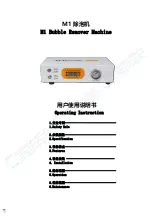
A backstop by definition are required to hold back a load from moving in a reverse direction.
Care must be taken in calculating the torque requirements and should be based on maximum or worst case conditions and
not average/normal loads.
Because any failure of BACKSTOP might result in costly damage or injury, care must be exercised to consider all the possible
loads and select appropriate service factors.
The BACKSTOP needs to be sized for the breakdown or stalled torque of the drive motors.
The following table shows typical service factors to be applied when size selecting BACKSTOPS.
BACKSTOP Size Selection
Selection procedures by motor stall torque
175%
200%
250%
300%
1.30
1.30
1.67
2.00
Maximum Stalled Torque or Breakdown
torque % of Normal Motor Rating
Service Factor
Motor Stalled Torque = Motor maximum torque experienced with no shaft rotation
Service Factor
The BACKSTOP has no backlash, two BACKSTOPS can share the total calculated torque 50%/50% theoretically.
However, we have to consider “Load sharing factor” because Load sharing of BACKSTOPS on conveyors with multiple drives
is a key factor.
For proper load sharing the torque arm gap clearance should be reduced to a zero gap, thus no swing of the torque arm
before the cams in both BACKSTOPS prevent the inner race from rolling back.
Dual Drive Application
For dual drive to a single head shaft, if the required backstop capacity is in excess of the listed capacity in the catalogue,
a twin arrangement of BACKSTOP Cam Clutch is the solution, as shown in Figure 4.
And we have to consider “Load sharing factor”.
Load sharing
In this arrangement, load sharing factor becomes 1.7 for two BACKSTOP Cam Clutches
Required torque for selection = Motor nominal torque × Service Factor
Belt Conveyor
BACKSTOP BS-F
BACKSTOP BS-F
Motor
Speed Reducer
Motor
Speed Reducer
Figure 4
5






























